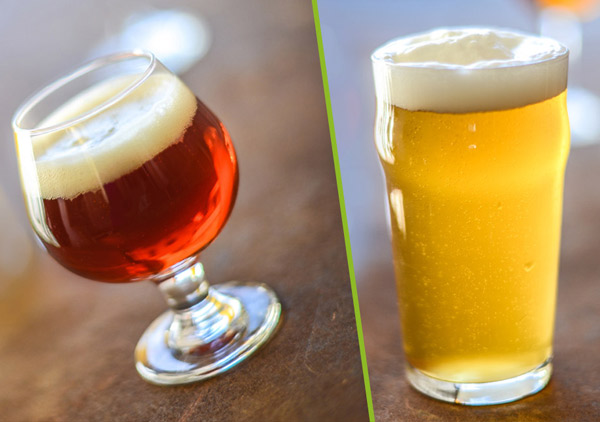
There are a number of misconceptions concerning the differences between ales and lagers. If you were asked to offer blanket statements like “all ales are like this” and “all lagers are like that,” you would be stuck. After all, both ales and lagers can be dark or light, strong or sessionable, hoppy or malty, and so on.
But lagers and ales are different. And the most defining differences have to do with yeast and fermentation.
Yeast
Ales are fermented with Saccharomyces cervisiae, or ale yeast. Ale strains are commonly referred to as “top-fermenting” because the most obvious fermentation activity appears to occur on the surface of the beer, though the term may also reference ale yeast’s tendency to flocculate at the surface (before eventually precipitating out completely to the bottom of the fermenter). It was, and in some instances still is, common practice for brewers to harvest the kräusen—the foam that forms on the surface of fermenting ale. Kräusen contains viable yeast cells that can be reused to ferment another batch of beer.
Lagers, on the other hand, are fermented with Saccharomyces pastorianus, which is referred to as a “bottom-fermenting” yeast due to its apparent lack of activity on the surface of fermenting lager beer. S. pastorianus is said to be a hybrid of two closely related yeast species, one being ale yeast (S. cerevisiae) and the other being a more cold-resistant yeast called Saccharomyces bayanus.
All of that said, some brewer’s yeasts fall into a gray area that blurs the clear distinctions between ale and lager. For example, beer styles like Kölsch and altbier are fermented with ale yeasts at low, almost lager-like temperatures. And California common beer is fermented with a lager strain that has adapted to warm, almost ale-like temperatures.
Fermentation Temperature & Duration
Both ale and lager yeasts ultimately do the same thing: convert malt sugars into alcohol and carbon dioxide (CO2). Ale fermentation falls on the warm side of the scale, with yeasts that prefer a general range of 60 to 78°F (16–26°C). Clean fermenting beer styles, like those of English and American “origin” (think pale ales, porters, stouts, etc) tend to stay under 68–70°F (20–21°C).
As fermentation temperature creeps above 70°F (21°C) and approaches 80°F (27°C) or warmer, ale yeasts can lend complex esters and phenols to beer. When intentionally created, these compounds add interesting complexity and are hallmarks of many Belgian, French, and some German styles. That peppery finish in your favorite French saison, or the notes of banana and bubblegum in your German wheat beer, are results of yeast activity and can be manipulated based on the fermentation temperature.
On the other side of the coin, lagers are fermented at cooler temperatures than ales, but not as cold as you might think. Typically, lager fermentation is conducted in the range of 48–58°F (9–14°C), and because some lager yeasts can ferment more kinds of sugars than ale yeasts, the final beer is often crisper on the palate. The cold fermentation temperature also means that yeast-derived flavors like esters and phenols are rarely present.
Fermenting lager, however, has one additional step compared to ale fermentation: lagering. Many beer drinkers assume lagers are fermented near freezing, but what they are actually thinking of is the extended cold lagering period during which the beer is aged for at least 2 to 3 weeks near 32°F (0°C). This cold aging period allows lager yeasts and other proteins to precipitate out, which helps deliver the signature smooth, crisp lager drinking experience.



Share Post